Exponent II's Blog, page 17
July 19, 2025
Let’s Hold Potluck “Etiquette Nights”
My teens attended an LDS “Etiquette Night” awhile back. They apparently learned how to properly hold a cup, which forks to use in a formal setting, and probably to open doors for girls. The youth spent an evening practicing this, including having to drink lemon juice for each mistake. I’m not certain how else the night transported them back to the 1950s, but I’m certain it was very proper.
Since that evening, I’ve witnessed no change in their table manners. Plus, we only put out one fork at dinner, but I think we’re setting the table properly.
Not long after this activity, the ward held a potluck after Sunday services. It was miraculous! The congregation, full of adult and youth graduates of “Etiquette Nights” and their well-mannered children and siblings, displayed decorum and self-restraint. Kids pulled out chairs for their seniors, teens offered to carry and fill the plates of young children, and leftovers were packed up and given to the less fortunate.
Just kidding.
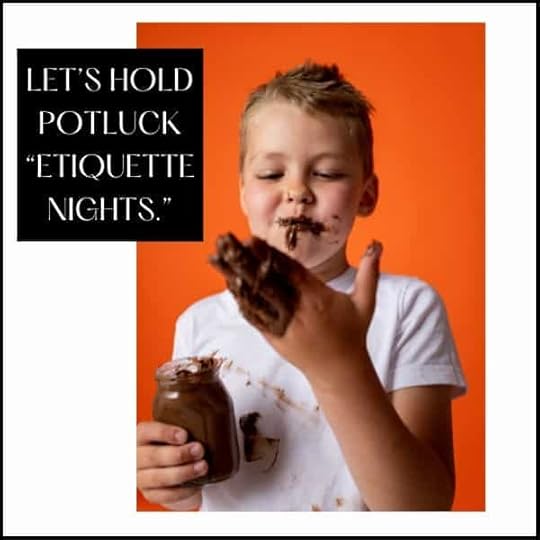
The Bishop attempted to reign in the children, who were practically foaming at the mouth. He invited the older adults and visitors to go first, offering them a chance to get some of the main course and more than a crumb of dessert before the stampede started. Kids grumbled and groaned at the unfairness of it all, but waited very little time before erupting from their chairs to race and push to the line.
And I get it. I really do. These kids just did reverent for two hours. Some traveled 20 to 40 minutes to get to church. They’re antsy, hungry, and bored. Plus, we love them and they’re pretty darn adorable.
Except, too often, these kids are so eager to get to the food and grab as much as possible, they give no thought to anyone else. They push past older, disabled, and younger members to pile plates with more food than they consume – usually multiple desserts. While some people are still waiting in line for firsts, children rush past with plates of firsts, seconds, and thirds.
Unfortunately, it’s not just at potlucks. It happens every time food is involved. When women are treated to a dessert bar during second hour on Mother’s Day, the kids are released from class to peer in anxiously at the door, then rush in and greedily grab at the food on the table. The same happens after Relief Society activities. I’ve witnessed the Young Women host a formal Mother’s Day dinner the same night at Primary and Young Men’s activities. Everyone in the building felt entitled to the food. Oddly, they didn’t feel the same way about the cleanup.
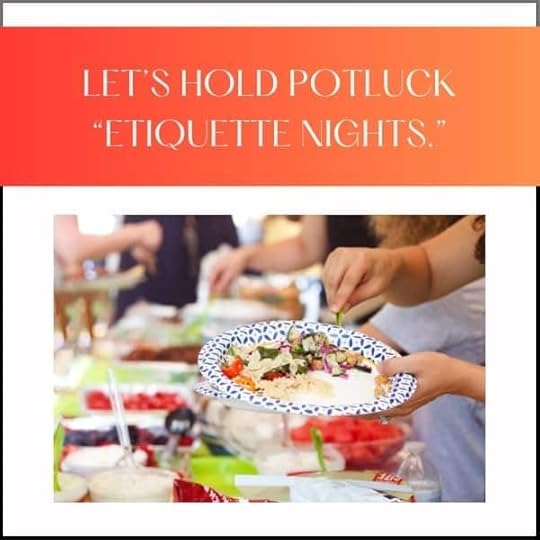
This isn’t really about the food at all, though.
I know what church potlucks are supposed to be: Opportunities to build community, share in a literal and spiritual communal feast, share our excess, bless others, and even feed the needy in our communities. Except, in my experience, potlucks too often fall short of this promise. In fact, they often bring out the worst in us.
I don’t care if kids eat multiple desserts or share in leftovers after an activity designed for someone else or demonstrate excitement over a meal. But if they aren’t learning the basic etiquette of loving, serving, and thinking of others first during these shared meals and treats, what are we doing at church?
Why don’t we take the classic Etiquette nights and worry less about formal table manners and more about loving our neighbor? Before we concern ourselves with teens-as-debutantes, let’s help them learn the basics of community, caring for the one, and gratitude. And what better place than a potluck?
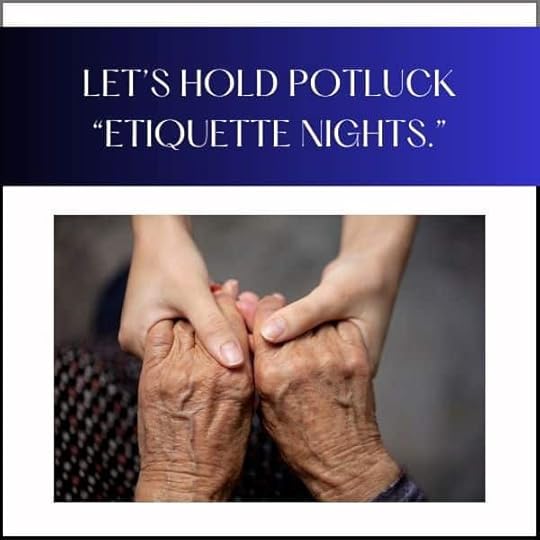
Perhaps, we need Potluck Etiquette Nights. The lessons would include:
Potlucks are about community. The first question any participant should ask is, “How can I help?”Set up and clean up is communal and there are jobs for everyone. Be kind, helpful, and positive. Rotate jobs.Everyone signs up and contributes to making food. This is not just the job of women. Making and bringing food is an act of love and service that everyone should enjoy.If the same people are always cooking/bringing food, setting up, and cleaning up, it’s time to reassess your potluck and consider how to share the responsibilities. Making a potluck possible should not take people away from spiritual enrichment. Set up can happen after church classes end.Participants should be aware of the food available and the number of participants and take food accordingly.You will not experience everything at the potluck, and that’s okay. When you don’t have room on your plate or have to choose between things you enjoy, remember that others will get to enjoy the food too.Participants should look around them for people who may need assistance getting to the table, filling plates, carrying items, etc. These people should go first and feel that serving them first is a joy.Everyone is tired by the end of church and already spent two hours in helper-mode. This is a great opportunity to stretch yourself and look for a mom trying to get food for herself and a baby (and maybe a toddler too), a child struggling with the ladles, or water pitchers that need refilling.Consider how leftovers could bless others. Could plates be brought to the homeless in your community? Are there homebound members or people in the community who would enjoy food and a visit?Some churches have a monthly or quarterly free community meal. Consider what it would mean to have your potluck go beyond the congregation and how you might behave differently at this type of meal. If a meal or treat is not meant for you, wait to be invited to enjoy any leftovers. Take one and ensure that there is enough for others to enjoy in the excess. If you eat, ask how you can help clean up.Never assume that food for an activity or event is for you. Don’t pressure people for a taste or leftovers. Organizers may have a plan to share with those who didn’t attend, to send treats home with participants, etc. Always wait politely for an invitation.Above all, take this opportunity to build community by sharing, taking only what you need, helping, and showing gratitude.July 18, 2025
Now Hiring: Paid Website Support for exponentii.org
While Exponent II has always been and continues to be primarily run with volunteer labor, occasionally we find ourselves needing specialized skills that we feel should be compensated. This is one of those times. If you have experience managing or designing websites and a desire to further the mission of Exponent II, please consider applying for this part-time position.
To Apply:
Please email a resume and a cover letter to board@exponentii.org by July 31, 2025. Direct any application questions, including requests for greater detail on the possible scope of work to the same email address. Note: Advanced coding or website developer experience is not a requirement. Project management and self-directed problem-solving are must haves.
Project Goal:
Exponent II is seeking a web-savvy professional to help us improve exponentii.org to achieve greater impact and professionalism as an organization, and offer our site visitors and internal team an improved operating experience.
Project Background:
Exponent II’s website, exponentii.org, houses key information for all pillars of Exponent II — from retreat registrations, to housing the Exponent II Blog and the paid digital-version of Exponent II magazine, to managing subscriber account access for Exponent II magazine.
So far in 2025, the website has had 212,000 sessions from 131,000 unique visitors spanning ten countries — largely readers of the extremely popular Exponent II Blog.
Skills Preferred
A knowledge of WordPress
A knowledge of theme builder Elementor and WooCommerce is helpful, but not required
Experience managing websites, including an understanding of hosting issues and solutions
Excellent project management skills and the ability to communicate with team members
Knowledge of how to evaluate a website’s functionality and propose solutions for the best user experience
Experience in managing website design changes and communicating with managers and developers
Knowledge of using Google Analytics to evaluate website traffic
Stipend:
$3,000 (paid in $500/month increments from August 2025 – January 2026)
*Note: This is all the budget we have available to dedicate to this project in 2025, but the board will evaluate the possibility of a continued stipend and workstream in 2026 based on finances and organizational priorities.
I Used To Work The Streets: How Jesus Would Run The Homeless Off Without Helping.
A couple years ago, I signed up for an ambulance shift that covered the Christmas concert going on at the LDS Conference center.
It was bougie, so much nicer than sitting in an ambulance for 12 hours “roving” the streets and then waiting in empty parking lots for a 911 call that comes through the radio from dispatch.
They (Missionaries? People running the event? I am not sure.) fed us dinner along with other Police personnel, Fire Chief, Temple Square Sister Missionaries, and many older couples in dress and tie. I don’t know them, but they smile at me as
After dinner, I am escorted to the press room where my partner and I wait to be summoned by a man in a tie and an earpiece in his ear, to whatever emergency may happen in the building.
We got calls to the parking area and then to the nurses room on the first floor. One of our patients didn’t want to go to the hospital by ambulance, so we escorted her to her car with her mom to see them safely off as they made their way to the hospital by themselves.
As we headed out the doors, I was struck by how empty it was outside the conference area. People experiencing homelessness are all over Salt Lake City. They look for any overhang or safe shelter to set up camp or get a break from the weather.
I ask the security guard that accompanied us outside.
“Do you make sure there aren’t any homeless people on church property?”
“Yes, we do.”
“That’s a bit ironic.”
No comment.
I get it, the people who have settled in the city without a home are 90% chance on drugs and 90% chance carrying a weapon, usually a homemade knife of some sort, and most usually for their own safety. I know from personal experience after personal experience.
But what struck me more than anything was that most all other shelters in Salt Lake City are run by other Christian Churches. Shelters…places to stay just because…even if you are not worthy of any reward for your work…because you are that destitute and you are a human.
Other churches in the heart of Salt Lake City will open their doors up on “Blue Code” nights when temperatures drop below 18 degrees. The gorgeous-temple like- Catholic church on South Temple will open its doors for those needing to eat and sleep on those cold nights.
Author and Catholic Priest Greg Boyle said in one of my favorite books of his, Tattoos on the Heart, “churches should smell like stinky feet.” When giving a Sunday sermon to disgusted attendees, who could smell the stinky feet and bodies of the homeless that had slept there the night before.
An internet search will show that the Church of Jesus Christ of Latter Day Saints DOES support some of these shelters financially. They have given millions to the Red Cross and agreed to use LDS meeting houses for disaster relief. And of course there are extra non tithing donations made by the Giving Machines.
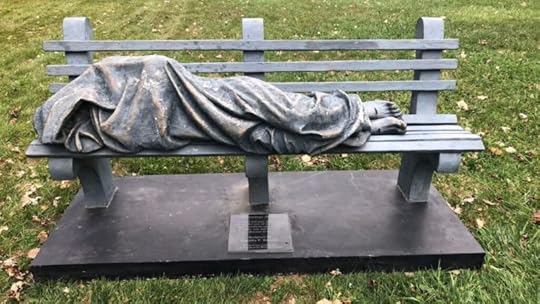
I LOVE this. I want to see more of this. I want to see a financial breakdown of all the donations the church has given and to whom they have given them. Take that light out from under a bushel and show the people what is being done with the money donated.
I don’t want to dig through news articles. I want an easy access spreadsheet provided yearly. I want to be proud of The Church of Jesus Christ of Latter Day Saints.
The difference to be noted here is disaster relief. Welfare Square does aid the destitute, but a family member who once worked there noted to me once, there are no handouts. I see the value of making people work for their food and accommodations- it’s incredibly valuable and lifting…teach a man how to fish…verse just give him one to eat. We are all about self reliance in the church and there is value in that. But there is a big gap in needs and capability.
The poor will always be among us.
I look out into the dark streets beyond temple square and know what the night brings for other co-workers as I hear a distant siren. I then turn and walk back into the elegance of The Church of Jesus Christ of Latter Day Saints Conference Center, free from anyone who makes us uncomfortable.
Related articles:I used To Work The Streets:
The LDS Church is Like the Titanic
10 Ways the LDS Church Fails to Be Family-friendlyHelp Us Keep the Blog Running! Our blog struggles to tackle many tech issues and could use your support! Click here to make a tax deductible donation. Thank you!
July 17, 2025
Volunteer Opportunity: Exponent II Magazine Instagram Account Manager
Exponent II is looking for an Instagram Account Manager for @exponentii_mag.
This volunteer position is perfect for someone interested in supporting Exponent II’s mission and being deeply integrated in the content and production of the quarterly magazine.
The account manager will highlight the great content produced in each issue of Exponent II magazine in order to recognize our contributors, encourage submissions (art and editorial), and increase the number of Exponent II magazine subscribers. In order to build community and enthusiasm, this position should also help keep Exponent II actively engaged in the Mormon feminist art, poetry and literary community on social media, inclusive of women and gender minorities. We consider our social media account an active place to promote the work of our contributing artists and writers in an effort to help further their careers and/or personal creative aspirations. We prioritize relationship-building and championing community over virality.
Onboarding, a Canva Pro account, an overview of our marketing strategy, and design templates will be provided.
Minimum roles and responsibilities include:
Create magazine-focused content for our social media channels, primarily Instagram (@exponentii_mag) with automated cross-posting to Facebook when relevant.You will have collaboration and feedback support from the Marketing Director (Rosie Serago) and Social Media Manager (Linda Hamilton). Create posts for each piece of artwork included in each issue of Exponent II, see an exampleCreate overview reels and/or posts to highlight the content (art and or writing) in each issue of Exponent II, see example and exampleYou will have collaboration and feedback support from the Marketing Director (Rosie Serago) and the editorial team (Millie Tullis/Natasha Rogers)Comment/engage with artists, contributors, writers on Instagram from @exponentii_mag’s profile to show our engagement and support of Mormon women and gender minority creativesRespond to any comments or DMs related to content in Exponent II magazineKeep track of new Mormon artists, influencers and ProgMo accounts we should follow and connect with for marketing and cross-promotion purposes.Additional opportunities based on interest and capacity:
Work with specific artists featured in Exponent II to create reels that highlight their work or process, see example and exampleDig into Exponent II archival issues to create posts or reels about interesting past content or our 5-year history, see example. We continually like to highlight our legacy as the longest-running Mormon feminist publication. Host Instagram Lives with artists or contributors Any other creative ideas you have!To apply:
Please email a resume and cover letter to marketing@exponentii.org by July 31, 2025.
3 Steps to Manage Emotions
While Nephi was grieving the death of his father, he wrote of an onslaught of negative emotions he was feeling:
…O wretched man that I am! Yea, my heart sorrow[s] because of my flesh; my soul grieve[s] because of mine iniquities.
…And when I desire to rejoice, my heart groan[s] because of my sins.
2 Nephi 4:17-19
Acknowledging and identifying our emotions, like Nephi did, is the first step to emotional resilience, according to the church’s Emotional Resilience curriculum, which states:
Becoming emotionally resilient requires you to [1st] acknowledge, {2nd] accept, and [3rd] respond to your emotions in a healthy way.
— Our Bodies and Our Emotions, Emotional Resilience for Self-Reliance
After Nephi acknowledged his emotions, he began to feel hope and joy again, even as he continued to mourn the loss of his father. He wrote:
Step 1: Identify your feelings
…Nevertheless, I know in whom I have trusted.
My God hath been my support; he hath led me through mine afflictions in the wilderness; and he hath preserved me upon the waters of the great deep.
He hath filled me with his love….
2 Nephi 4:19-21
At the children’s hospital where I work, we use a feelings wheel to teach children how to identify and acknowledge their emotions. Describing feelings with words is hard for kids, and frankly, lots of us adults find it hard to talk about our feelings, too. The feelings wheel has spokes representing a wide spectrum of emotions such as happiness, sadness, fear and love, and children can simply point to the emotions they are feeling.
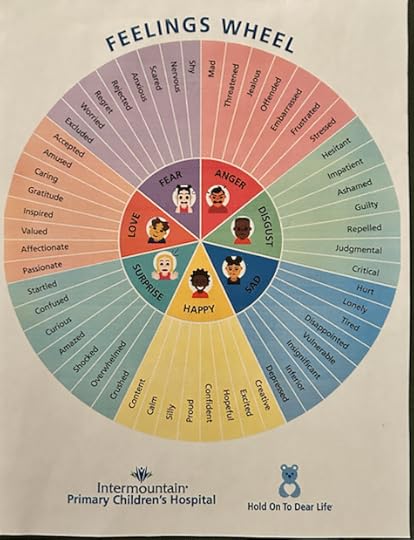
The hospital’s Talk to Tweens program teaches kids to follow the same steps listed in the Church’s Emotional Resilience curriculum:
Identify your feelingsAccept your feelingsRespond to your feelingsIt says:
Step 2: Accept your feelings
Learning how to name your feelings is a good first step in learning how to manage them. …Being able to distinguish a feeling is helpful because it helps you decide how you want to act. Once you can name it, you can accept it, then decide how to respond. How you manage feeling jealous may be different than how you manage feeling stressed.
— How to Use the Feelings Wheel, Intermountain Health
We recently started decorating the children’s hospital with colorful characters based on the emotions described on the feelings wheel. Since the feelings wheel is intended to identify a wide spectrum of human emotions, some of these new characters look angry, sad, or afraid.


When we first started displaying these characters around the hospital, some adults were confused. Why would we intentionally display sad and grumpy faces in our hospital? Doesn’t everyone prefer to see happy faces?
Displaying the full spectrum of emotions is one way we encourage kids to accept their feelings. At the hospital, people do experience positive emotions like hope, happiness and love, and we work hard to help people feel good when they are in our care, but a hospital is also a place where people may experience some of the saddest and scariest experiences of their lives, and we want children to know that it’s not wrong to feel their feelings. All emotions are good.
The hospital’s Talk to Tweens program teaches parents:
Some feelings are welcome, while others may feel unwelcome. Accepting feelings when they are present can be uncomfortable for tweens and adults. Helping your tween understand that all feelings are valuable and have a role will allow them to accept emotions as natural.
— Emotional Wellbeing, Intermountain Health
The Church curriculum echoes this sentiment, stating,
God’s emotions
Emotions are a normal part of our mortal experience.
— Our Bodies and Our Emotions, Emotional Resilience for Self-Reliance
I would add that, according to the scriptures, emotions are not only part of the mortal experience, but part of the godly experience.
Zephaniah wrote of God’s emotions of joy and love:
The Lord thy God in the midst of thee is mighty; he will save, he will rejoice over thee with joy; he will rest in his love, he will joy over thee with singing.
Zephaniah 3:17
Enoch wrote of God’s sadness:
And it came to pass that the God of heaven looked upon the residue of the people, and he wept; and Enoch bore record of it, saying: How is it that the heavens weep, and shed forth their tears as the rain upon the mountains?
And Enoch said unto the Lord: How is it that thou canst weep, seeing thou art holy, and from all eternity to all eternity?
Moses 7:28-29
Enoch seemed shocked that God could experience such a negative emotion. Like many of us are prone to do when one of our loved ones is sad, he started ineffectively trying to cheer God up. He rambled on:
And were it possible that man could number the particles of the earth, yea, millions of earths like this, it would not be a beginning to the number of thy creations…and also thou art just; thou art merciful and kind forever;
And thou hast taken Zion to thine own bosom, from all thy creations, from all eternity to all eternity; and naught but peace, justice, and truth is the habitation of thy throne; and mercy shall go before thy face and have no end; how is it thou canst weep?
Moses 7:30-31
What Enoch was struggling to understand is that God’s sorrow was just as great and good an emotion as God’s joy and love, and sorrow co-existed with these more positive emotions.
As God’s children, our capacity to experience the range of human emotions, and even to experience mixed emotions like grief and joy simultaneously, is part of our legacy from God.
Wholeness during emotional health problems
God created man[kind] in his own image, in the image of God created he him; male and female created he them.
Genesis 1:27
During this mortal experience, our bodies are subject to disability and disease, and this is true for our emotions as well. Trauma and mental illness can interfere with the healthy functions of our emotions.
General Relief Society President Camille N. Johnson pointed out that while God has power to heal our afflictions:
He may not provide healing from illness and disease—chronic pain, autoimmune disorders like multiple sclerosis, cancer, anxiety, depression, and the like. That kind of healing is on the Lord’s time.
— Camille N. Johnson, Spiritually Whole in Him, April 2025
Notice that President Johnson accurately listed mental health problems in the same category as other chronic illnesses. In the past, mental illnesses have sometimes been mischaracterized as personal failings, when in actuality, they are medical problems like any other chronic illness.
President Johnson asks,
If healing and wholeness are not the same, can one be made spiritually whole by Him but not yet physically and emotionally healed?
— Camille N. Johnson, Spiritually Whole in Him, April 2025
And she answers her own question:
Emotions have a purpose—even anger
I can be whole while I wait for healing if I am wholehearted in my relationship with Him.
Faith in Jesus Christ begets hope. I find hope in striving to be whole—a wholeness born of faith in Jesus Christ. Faith in Him increases my hope for healing, and that hope reinforces my faith in Jesus Christ. It is a powerful cycle.
— Camille N. Johnson, Spiritually Whole in Him, April 2025
It is easier to accept our emotions when we recognize that all emotions have a purpose, even those emotions we usually characterize as negative. Fear helps us to be cautious and safe; sadness can lead us to seek love and connection.
I think people tend to be most skeptical about accepting anger, because when we respond to anger in the wrong ways, the consequences are devastating, both to others and to our own souls. But even anger has a purpose. Anger is the emotion that has motivated the many reformers of history to recognize injustice and fight for the right, and like any other emotion, we can learn to respond to anger in healthy ways.
Step 3: Respond to your feelingsDuring my mission, while assigned to an unusually difficult missionary companion, I re-read a talk by Elder Lynn G. Robbins over and over which inspired me to control the anger I was feeling toward my companion. In that talk, he challenged us to:
Make that choice today, right now: “I will never become angry again.” Ponder this resolution.
— Lynn G. Robbins, Agency and Anger, April 1998
With the evolved vocabulary I am learning about how to talk about emotions, I would now say that it is not possible or desirable to resolve to stop feeling anger. We tend to be somewhat sloppy in the way we talk about anger; when we say we got angry, sometimes we are talking about the emotions we felt, and sometimes we are talking about the inappropriate way we behaved. We can resolve to stop acting out in anger, and instead, respond to our feelings in healthy ways.
Elder Robbins taught,
A cunning part of [Satan’s] strategy is to dissociate anger from agency, making us believe that we are victims of an emotion that we cannot control. We hear, “I lost my temper.” …To “lose something” implies “not meaning to,” “accidental,” “involuntary,” “not responsible”—careless perhaps but “not responsible.”
…To those who say, “But I can’t help myself,” author William Wilbanks responds, “Nonsense.”
“Aggression, … suppressing the anger, talking about it, screaming and yelling,” are all learned strategies in dealing with anger. “We choose the one that has proved effective for us in the past. Ever notice how seldom we lose control when frustrated by our boss, but how often we do when annoyed by friends or family?”
— Lynn G. Robbins, Agency and Anger, April 1998
Corrie ten Boom, a holocaust survivor, wrote about re-meeting a Nazi prison guard after the war had ended who approached her and wanted to shake her hand. For the sake of her own emotional health, Corrie wanted to forgive this man, but all she felt was anger.
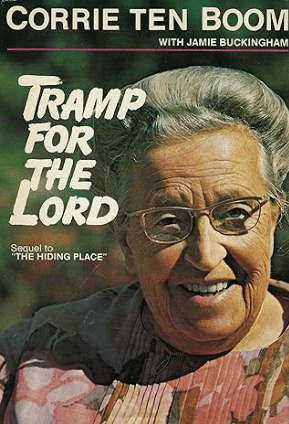
But forgiveness is not an emotion–I knew that too. Forgiveness is an act of the will, and the will can function regardless of the temperature of the heart. “Jesus, help me!” I prayed silently. “I can lift my hand. I can do that much. You supply the feeling.”
And so woodenly, mechanically, I thrust my hand into the one stretched out to me. And as I did, an incredible thing took place. The current started in my shoulder, raced down my arm, sprang into our joined hands. And then this healing warmth seemed to flood my whole being, bringing tears to my eyes.
— Corrie ten Boom with Jamie Buckingham, Tramp for the Lord: Sequel to the Hiding Place, 1974
Dr. Lewis B. Smedes said,
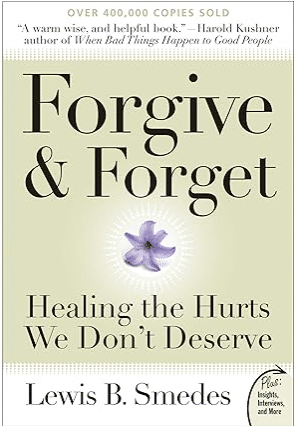
To forgive is to set a prisoner free and discover that the prisoner was you.
― Lewis B. Smedes,Forgive and Forget: Healing the Hurts We Don’t Deserve, 1984
Like forgiveness, expressing gratitude is another powerful strategy that at first glance seems to be a gift for others, but even more deeply impacts our own emotional wellbeing. I had an experience like this just this past Friday. At work, I am given a small budget for thank you gifts, and on Friday evening, I had to use that budget before it expired. I was feeling grumpy and tired and worried about writing this talk, and all I really wanted to do was turn off my work computer and start my weekend, but as I wrote the thank you notes, I felt my whole body relax, because expressing gratitude felt so good.
Another strategy to cope with difficult emotions is given in a Psalm:
Be still, and know that I am God…
Psalm 46:10
We can exercise stillness by taking a deep breath, saying a silent prayer, or by taking a break and removing ourselves from a tense situation. In the scriptures, we see repeated examples of prophets going into the mountains to commune with God, away from the hustle of daily life.
As we cope with difficult feelings, we have opportunities to become more like God. Jesus Christ was “a man of sorrows and acquainted with grief” (Isaiah 53:3) and he channeled these difficult emotions to attain a perfection even beyond what he already had. Alma taught that as Christ took upon himself the same infirmities we experience, “his bowels [became] filled with mercy…that he may know… how to succor his people according to their infirmities.” (Alma 7:12)
Although Jesus Christ was already perfect, by feeling these difficult emotions he somehow developed even more empathy and power to do good. It is comforting to know that Christ understands us through his suffering, but it is empowering to realize that as we follow his example and channel our own emotions we can also become more like God. Perhaps this is why God has blessed us with the capacity to experience a wide spectrum of emotions, similar to the wide spectrum of emotions God feels. May God bless you as you feel your emotions and become more like God in the process, I pray in the name of Jesus Christ, amen.
This article was originally presented as a Sacrament Meeting talk in the author’s home ward in South Jordan, Utah in June 2025.
Support your fellow writers, artists, organizers, and readers by subscribing and donating.July 16, 2025
Surgery

When I was nineteen, I performed major surgery.
I stood, in my mind’s eye, naked and shamed before a large mirror. Too many pieces of me needed refining. Needed salvation. Needed extraction. I pulled the knife, silver and gleaming in the florescent light, the hilt too heavy in my hands.
I started small, my hand shaky and unsteady. I sought a spot I thought would be easiest to forget ever existed. I cut through my music, digging out any song or sour note that wasn’t a praise to the Strength of Youth. Lyrics that spoke to my soul and filled me with joy, with connection on a cellular level. But they were wicked with dirty words and dangerous ideas. Away they went with a single slice. In the mirror, I saw it was only an ear. What did I need the extra one for anyways? I was lighter. Holier.
I moved to my closet, my knife now slick with spots of crimson. Shorts and skirts I felt so beautiful in all needed to go. They were too short, too revealing, too shameful, too lustful, too worldly. In a few minutes, they were gone and sliced, the memories of happiness in them buried deep. I assessed the mirror again. Only a few notches in my side were gone. Blood pooled and dried, but it was done and I was better.
The easiest spots done, I looked into my unholy mind in search of the ideas that I carried that simply wouldn’t do. I couldn’t be a feminist––no priesthood man would ever want me. I couldn’t believe in socialist ideals––the gospel of wealth was all-knowing. Equal rights weren’t a good ideal. Intellectualism was a slippery slope. Ambition was unbecoming. Creativity was suspect. I shoved and cut even as part of me screamed, leaving behind only the words of prophets embedded in an old seminary manual, the hope for marriage, the need for children. The blood pooled at my feet.
And so I went on with righteous precision. A nick here, a hole there. I was emptying myself so the church could fill it with something brighter, something better. Someone new. Someone I wouldn’t recognize but needed to be anyways.
I hesitated the longest with the knife over my chest. My heart. Each beat it squirmed, unprepared for its extraction. Crimson drops from the instrument dripped like rain on my breast. I needed a new heart. This one was broken, defective, unworthy. And so, I plunged the knife in. Farewell to those dreams that coiled through my nerves––to write, to explore, to create, to experience. Goodbye to those ambitions that pumped through each unrighteous artery––to have a career, to go to school, to work and find pride in it. No more of those impure desires that crisscrossed my veins; sins the lot of them.
At last, I stood before the mirror, a scene of gore and nightmares, but a smile stretched across my face. I was free from what didn’t bind me. I was worthy at last. I was finally good enough. The church would accept me now. I wouldn’t miss those pieces I’d extracted. My life spark dimmed and flickered out. But surely, I wouldn’t need it’s light anymore.
And now decades later, I sit before the same mirror and wonder who it is I see. A woman covered in scars. A woman I never wanted to be. I miss myself. I miss those pieces that made me. They’re long gone and I shouldn’t wish for their return, like a cow to it’s sick. But still the tears don’t stop. Who could I have been if I’d been allowed to be me? If I hadn’t thrown off my dreams and hopes for a God controlled by men in their patriarchal tower? Why is it all so heavy though I cut it away so long ago, like invisible chains dragged behind me?
I’ll never truly know. For I was a surgeon at only nineteen, believing I had to be. I gutted my joys for promised happiness in a life of someone else’s making. And now I sit and wish and mourn and weep.
Just another sin to be extracted.
July 15, 2025
Relief Society Lesson Plan: Disabilities
I recently lead a discussion in Relief Society about disabilities. July is Disability Pride Month, so the timing was particularly nice, but this topic could be taught at any time of the year. I used President Camille N. Johnson’s talk Spiritually Whole in Him from the April 2025 conference as a reference, however this lesson plan could easily be modified to coordinate with any talk referencing disability. (Discussions in Relief Society and Elder’s quorum are supposed to focus on topics from conference talks, not the conference talks themselves.) My goal was to create a space where women in the ward could talk and educate about the disabilities they (or their loved ones) experience.
Open the discussion by referencing the talk. When I used President Johnson’s talk, I admired how she made a beautiful distinction between physical healing and spiritual wholeness as she told the story of the ten lepers.
State that today you want to focus on the topic of disability. According to Wikipedia, more than a quarter of Americans have a disability. People with disabilities make up the largest and most diverse minority group. There’s a good chance that if you do not have a disability yourself, you have a loved one who does. Disabilities can be short-term or last a lifetime. They can be caused by a single catastrophic event, or they can create a slow, gradual decline in function. Any person may become disabled. Even though disability is very common, there are so many different types of disability that it can be hard to know what to say and how best to help. Prime the class for participation by saying that the majority of class time will be for sharing about the disabilities with which they have experience.

Show a picture of the disability flag. Discuss the flag’s symbolism:
The diagonal stripes represent how disabled people have to cut across barriers in society.Red represents physical disabilities.Yellow is for neurodiversity.White represents invisible and undiagnosed disabilities. Some disabilities can go undiagnosed for years. Invisible disabilities include diabetes, traumatic brain injury, rheumatoid arthritis, Ehlers–Danlos syndrome, endometriosis, epilepsy, celiac disease, and many others.Blue stands for emotional and psychiatric disabilities, including mental illness, anxiety, and depression.Green is for sensory disabilities such as deafness or blindness.Black represents the anger and mourning over the abuse and neglect that disabled people have to fight against.Write the following list on the board or project it onto a screen:
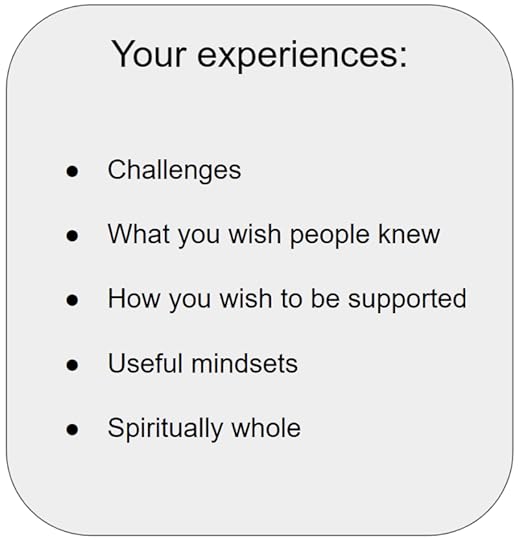
Tell the class that you would love to hear about any or all of the following topics:
Challenges specific to a disability they are familiar withWhat you wish people knew about the disabilityHow you wish to be supportedUseful mindsets (This one requires a bit of explanation. Talk about how feelings like anger, sadness, and frustration are normal parts of living with a disability. Disabilities can just be really crappy somedays. Those feelings will come and go. A useful mindset is something that has helped you get through rough patches so you don’t feel like you are wallowing in bitterness all the time.)Spiritually whole (This point ties back to President Johnson’s talk.)Before class I asked a spiritually mature sister who has long-term experience living with a disability if she would be willing to talk about it. She discussed all the points on the list, and then I opened up the discussion to the rest of the class. Having someone prepared to share helped set the tone for the discussion and broke the ice around sharing about a fairly vulnerable topic.
Close the discussion by coming back to the talk. I discussed how Mary Magdalene was healed by Jesus. She walked with him. She witnessed his death and resurrection. She shared her witness with others. Disabilities can help us understand Jesus and follow him. They can help us practice mourning with those that mourn and comforting those that stand in need of comfort.
I ended by sharing this poem:
Sister,
Will you… Hold my hand for a little while?
I don’t need you to save me
No need for you to fix anything
No need for you to hold my pain
But will you simply hold my hand?
I do not need your words
Your thoughts
Nor your shoulders to carry me
But will you sit here for a while with me?
Whilst my tears they stream
Whilst my heart it shatters
Whilst my mind plays tricks on me
Will you with your presence let me know that I
am not alone, whilst I wander into my inner unknown?
For my darkness is mine to face
My pain is mine to feel
And my wounds are mine to heal
But will you sit with me here, while I
courageously show up for it all my dear?
For I am bright because of my darkness
Beautiful because of my brokenness
And strong due to my tender heart
But will you take my hand lovingly, when I
sometimes journey into the dark?
I don’t ask for you to take my darkness away
I don’t expect for you to brighten my day
And I don’t believe that you can mend my pain
But I would surely love if you could sit for a while
and hold my hand,
until I find my way out of my shadowland!
So will you… Hold my hand until I return again?”
Zoe Johansen
Guest Post: The Work is Worthy of Wages
Guest Post by Cyndi Nolen Kimball
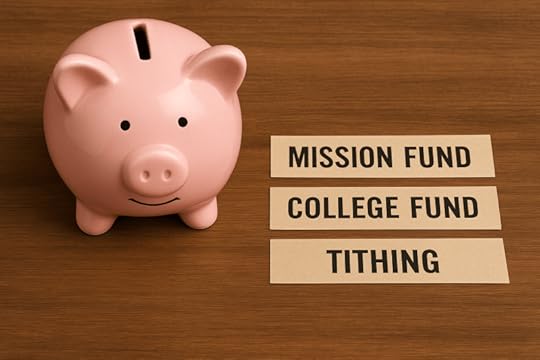 Image Created with ChatGPT
Image Created with ChatGPTThe recent reports about the Church paying influencers to share their testimonies online has stirred up some strong feelings—and valid questions—about how we value labor, service, and voice in our faith community.
When I first commented, “The Church should pay their full-time missionaries,” I didn’t expect it to resonate so widely. But maybe it struck a chord because so many of us are asking: Why are some forms of service compensated while others are expected to be free?
We pay male general authorities, the First Presidency, and the Quorum of the Seventy. We now pay social media influencers to bear public witness. But we don’t pay full-time missionaries, the women in general auxiliary presidencies, or even members who clean our chapels.
Why not?
Let’s talk about missionaries.
What if missions were paid service?
Young missionaries are asked to give up everything for 18 to 24 months—their schooling, their jobs, their relationships, and in many cases their mental and physical health. They come home spiritually enriched, yes, but financially drained and developmentally behind their peers. While others their age may have earned two years of income, gained job experience, or made progress toward a degree, missionaries often return home to start from scratch. If we are serious about President Oaks’s encouragement for young people to marry and have families soon after their missions, then shouldn’t we be doing more to set them up for success?
Imagine if a mission were recognized as a professional development opportunity—a job that develops:
Cross-cultural competenceLanguage proficiencyPublic speakingEmotional resilienceLeadership and goal-settingConflict managementTime budgetingThese are career-building skills. Paying missionaries—especially those from lower-income families—could:
Make service more equitableHelp returned missionaries afford college or trade schoolEase the financial burden on familiesEncourage more young adults to consider marriage and parenthood with a stronger foundation of independenceIt also would provide dignity. Many missionaries spend months or years working and saving up just to be able to go. They come home broke. And while service is noble, the disparity is clear: we pay someone to bear their testimony for a few sponsored posts online, but not the young person doing the same thing 12 hours a day, seven days a week.
And let’s not overlook labor standards. Missionaries work long hours—often in extreme climates, far from home, without adequate rest or nutrition. The Church could demonstrate Christlike stewardship by ensuring that missionaries:
Follow local labor lawsHave a manageable and humane scheduleAccess regular mental and physical healthcareLive in safe, secure housingAre provided adequate, nourishing foodAnything less borders on neglect. In some cases, it even begins to resemble spiritualized exploitation or what some may describe as a form of human trafficking. No one would accept these working conditions for their own child in any other context. Why is it acceptable for God’s?
Let’s also talk about our meetinghouses.
My local chapel houses four wards, a branch, the mission office, and several seminary classes. That’s dozens of weekly activities and hundreds of people. The expectation that unpaid members clean that space each week is not just impractical—it’s inequitable. Many of us are stretched thin. There are likely members of our congregation or community who would welcome the employment and do the job with pride and dignity.
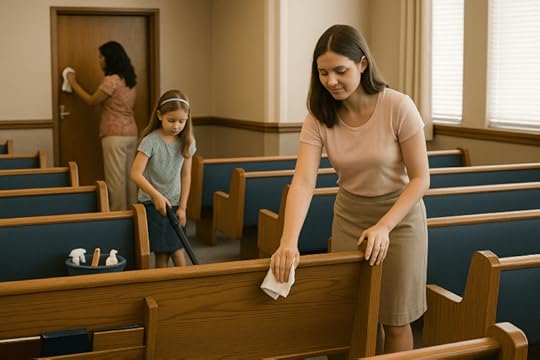 Image created with ChatGPT
Image created with ChatGPTAnd finally, our female leaders—capable, faithful, and hardworking women—are offering full-time service at the general level, traveling, speaking, organizing, and counseling others, often while balancing families and jobs of their own. If we believe their work is as spiritually essential as their male counterparts’, why is their labor not compensated?
It’s not just about money. It’s about what we value, who we trust, and how we honor the real effort that goes into building the kingdom.
Unpaid service has its place. Many of us serve joyfully. But when the unpaid labor is overwhelmingly borne by young people, women, or lower-income members, we must ask: Is it really service—or is it a systemic oversight?
Let’s open the door to conversation and compassion. We can honor the tradition of consecrated effort and recognize when it’s time to evolve.
Originally from the California Bay Area, Cyndi was raised with over 70 foster siblings and is the youngest of six. She is an empty nester and her least favorite question to answer is why she only has one child. Cyndi is a sex educator and researcher with graduate degrees in psychology and sexual health, currently working at UCLA as a research assistant on a study focused on dating and relationships among autistic adults. She is passionate about equity, faith, and creating spaces for honest dialogue in the various communities and circles she roams in.
July 14, 2025
Heavenly MotherS
Last night I was made aware of this clip circulating online. According to the poster, it’s from a sacrament meeting on July 13, 2025 in Ghent, Belgium. Watch it HERE before you read on.
Note: the title of the video is a bit misleading. Oaks does not “confirm” the existence of heavenly mothers, but does directly state the possibility over the pulpit.
[image error]Since the early days of Mormonism, the church has taught the doctrine of a Heavenly Mother. We are children (spiritually and literally) of Heavenly Parents. This teaching brings comfort to many, especially women like myself who find a male-focused deity too exclusive and gendered. However, Mormonism teaches little about Heavenly Mother beyond a belief in her existence. As Oaks states in the above video, we don’t know much about her, her role in the cosmos or creation. Mormon leaders also teach members should not speculate about her, talk about her, pray about her… really do anything other than say she exists and move on.
It’s stifling. It’s downright harmful to silence Heavenly Mother. I could go on about this, but that’s not the point of this particular piece. Instead, I want to focus on the first half of Oaks’ comment—that we might have heavenly motherS. As in multiple heavenly mothers.
How is this possible? Oh, just good old POLYGAMY.
Brigham Young: “The only men who become Gods, even the Sons of God, are those who enter into polygamy. Others attain unto a glory and may even be permitted to come into the presence of the Father and the Son; but they cannot reign as kings in glory, because they had blessings offered unto them, and they refused to accept them.”(Journal of Discourses 11:269.)
Brigham Young, and many other early church leaders, clearly taught that polygamy was an eternal doctrine and required for exaltation. In order to reach the highest degree of eternal glory, a man needed to have multiple wives and women needed to be sealed in a polygamist relationship to a man. The church no longer openly teaches this. However, it has also never clearly disavowed it. Polygamy continues to haunt us for many reasons, especially in the lack of straight-forward disavowal of its practice. D&C 132 remains canonized in our scriptures.
Current sealing practices support eternal polygamy. A man can be sealed to multiple women after the death of a spouse. A women can only be sealed to one man, even when it means choosing between a former and current spouse as an eternal companion.
Orson Pratt: “The fleshly body of Jesus required a Mother as well as a Father. Therefore, the Father and Mother of Jesus, according to the flesh, must have been associated together in the capacity of Husband and Wife; hence the Virgin Mary must have been, for the time being, the lawful wife of God the Father: … Inasmuch as God was the first husband to her, it may be that He only gave her to be the wife of Joseph while in the mortal state, and that He intended after the resurrection to again take her as one of his own wives to raise up immortal spirits in eternity.” [The Seer, 158.]
God is a polygamist, according to early church leaders. His wives include Mary, with whom he physically conceived Jesus. Again, the church does not publicly teach this anymore. But I’ve heard plenty of members share this belief that Mary is a plural wife of God and/or that God has multiple wives because polygamy is an eternal principle. The church has never released an official statement denying that God is a polygamist so there’s always room for speculation and rumor, especially when it’s based in actual doctrine. People are wounded when they can’t sort out what is doctrine and what is not because the church refuses to disavow harmful practices.
Some members have theorized that the reason we don’t talk about heavenly mother is because we don’t know which one is ours. Polygamy complicates the parent-child relationship and so it’s better we say nothing. Since the church has never given a direct revelation to say if God is or is not a polygamist, we can’t actually shut this theory down.
So Oaks is simply saying the quiet part out loud. We might have Heavenly Mothers; it fits perfectly in Mormon theology and was once considered the absolute truth. So who’s to say that Oaks isn’t spouting doctrine or leaving the door open for it?
This seemingly small admission matters a lot. The pinnacle of Mormon doctrine is the belief that we can all become like God. That God is an exalted man and our eternal destiny is to become like him. So if God is a polygamist, then to be truly like him we’re all going to need to become polygamists. That thing we pretend was long ago in the past haunts our future—its our eternal destiny.
If we have multiple heavenly mothers and women are destined to become like heavenly mother, then we must become polygamist wives. Silent polygamist wives who aren’t allowed to talk to their children or even be spoken of. Men will create worlds and rule from on high, but women will only be unnamed baby-makers for their husband’s kingdom. If that’s Mormon eternity as a woman, I sure as hell don’t want it.
I should also note that Oaks and Nelson, the prophet, are polygamists. They are both married to two women, their first wife and current living wife. They also both openly talk about being sealed to both women and view this is a polygamous relationship. Polygamy is very much real and alive to them.
Oaks is 92-years-old. He was a teen when the last polygamist prophet died (Heber J. Grant). He grew up in a Mormon world dealing with the fallout of polygamy. So this could be his old beliefs coming through; maybe even a slip up from an aging mind. And yet, this man is literally in the highest governing body of the church. He’s still making rules, policies, and doctrinal choices. So yeah, it might just be because he’s old and has old beliefs—but those old beliefs are directly affecting us today because he holds them! He’s the next in line to be the prophet and he still believes in polygamy. That colors his opinions and leadership choices, which in turn, directly affects us as every day members.
Oaks’ comment about heavenly mothers has me rattled because it’s a clear indication that the church isn’t going to be un-muddying the waters around polygamy anytime soon. Some members like to pretend that polygamy is something from the past and we shouldn’t worry about it. But as I’ve written before, it’s not gone. It’s everywhere. Everything is polygamy. We’re still swimming in this water every day in the LDS church. Oaks’ comment only proves that even more.
I doubt he’ll ever offer further explanation or statement on it either. As with everything else about polygamy, we’re left as lay members to wander through the muck alone, uncertain which of our theories or beliefs is real. What doctrine will come for us in the next life? Which of us will be forced to become a plural wife because her husband will marry again after our death without our consent? When will the temple ceremony stop promoting sexism and back-door polygamy?
So yeah, I’m making a big deal over one line recorded in a sacrament meeting across the globe. Because these things matter. It matters to me and so many other women if we’re destined to become silent, polygamist mothers. If we’ll ever get to pray to and talk about the divine feminine. These supposedly small comments by patriarchal men can mean staying or leaving, heartbreak or endurance, for many of us and I’m so tired of being dismissed for having real fears and concerns.
Why I’m not a feminist–a note from my younger self
When I was 23 and in my final semester of grad school, running the student newspaper, my two friends and I took over the opinions page to explain our various feelings about—wait for it—why we were not feminists. (Spoiler alert: We all very much were. I think we thought these were edgy takes.)
I found that column a couple of years ago during some seasonal cleaning, right about the time I found the list of qualities I wanted in my future husband. I read them both. I shook my head at young Heidi and threw them both out.
I’ve thought a lot about that column in the years since. My years of LDS teachings about the proper place and duties of women ooze through the whole thing. The contortions I and so many women twist ourselves into to be obedient to the teachings, to justify the statements from leaders about wifehood and motherhood with the reality that I had big plans for my career and no plans for marriage. After a recent conversation with friends, one of whom was having a baffling conversation with an old friend who refused to question anything the church taught, I returned to that column.
The entirety is here if you wish to read it; I’m going to share excerpts. I have lots of good things to say about my mom; I will not refute any of them now. I think she was mostly happy with her life, and she never told me she wished she’d made different choices or felt pressured into stay-at-home motherhood. I’m not going to speak for her.
But I am now going to refute the things I said, about which I was definitely wrong, and I’ll speak for me. Buckle up—23-year-old Heidi went all in with the blissful cognitive dissonance of, well, a naïve Mormon woman who’d never questioned anything around her.
We’ll start here: “I used to consider myself a feminist. (Note: I was 23! When did I consider myself a feminist—as a teenager? And I’d aged out of it by my early 20s? Based on what life experience, exactly?) No man would run my life, no society would tell me what I could or could not do or what I was capable of, and no notion of propriety was going to stop me from doing what I wanted, no matter how historically unfeminine my career or life choices were.”
Y’ALL. I left the LDS Church the day after the U.S. presidential election last year. It wasn’t the only reason or the biggest reason, but the catalyst that day was I was tired of men running my life. For more than 40 years, I let men tell me what to wear, what to eat and drink, how to spend my time and money, with whom to spend time and what dreams I was allowed to have in my life. The notions of propriety and (un)femininity were coming from inside the house.
More: “To me, that’s what feminism is all about—choices. Knowing I stood up for my right to choose my life path and for the right for other women to choose their paths without hindrance from a government or society determined to keep women in our places.”
That IS what feminism is all about. Did I choose my path without hindrance from a church society determined to keep me in my place? Because I actually did have reasonably progressive parents, and I still planned to get married and have children and stay at home and not use those two degrees and three years of work experience I was about to have on my resume. (Though I would wait until I finished college to do that. See? Progressive.) I grew up in a church not being told, “choose the life path that works for you! Try a little bit of everything! What do you want to be doing in 20 years? The world is your oyster,” but instead, “here is the path for you. It’s the only path. You will be good at it because it’s your gender role. To want anything else is a sin. To not find fulfillment in it is a sin.” (Fun fact: I have aunting stories that make it clear that nurturing was not one of my skills. Yes, one does end in the ER. Another ends in an epic tantrum. Nurturing is not innate to all women.)
Back to my 23-year-old self in her *cough* wisdom *cough*: “Unfortunately, somewhere in the last few decades feminism and I have parted ways.”
Oh, honey, you’d only been alive for two decades. Would you have been happy with Sonia Johnson’s feminism? If the answer is no, you might just be confused. Or a pick-me girl.
“Many mainstream feminists and feminist organizations no longer promote views with which I agree. And what’s worse is the current rhetoric being served often does not improve the welfare of all women. Sometimes, those statements and actions even cause women’s rights to regress or condemn decisions made by women.”
Well, having been alive a lot longer, I can wholeheartedly say we should condemn some decisions made by women—not in their own lives, necessarily; that’s none of my business. But women in politics and women in general church leadership—or women in our Relief Society meetings—do a lot of damage when they force their patriarchal views on other women. So let’s condemn, or at least challenge, those.
More: “Women who stay at home are viewed as traitors. (Note: I … don’t think that was true then? Or now? I think that was my internalized patriarchy putting that on society. I’m sure there were some feminists who went further than I did, but that wasn’t mainstream.) Women who don’t believe in abortion are being brainwashed by religious zealots. (Whoops. Told on myself a little bit there, didn’t I?) …What happened to choice? Why doesn’t the National Organization of Women fight for the rights of soccer moms just like they do for businesswomen?”
Fun fact: NOW does, and in 2005 did, fight for the rights of stay-at-home moms. Right about this time, NOW was lobbying for women’s health, fought for better education for children, fighting against proposed laws to make welfare harder to access for women, picketing stores because of sex discrimination policies, allying with women with disabilities, establishing an advisory committee on mothers’ and caregivers’ economic rights, marched for peace and more (see NOW’s website). That’s the organization that had “left me behind.”
This was pointed out to me, I will note, by three professors in the women’s studies department at my university. They took my two friends and me out for lunch and very kindly pointed out that we didn’t know what we were talking about. They were right. I am so grateful for them.
Another fun fact: It’s the National Organization FOR Women. I didn’t even do enough research to get the name of the organization right.
Then I wrote this: “Women have options. We can work just about anywhere, we can go to college, we can play professional, collegiate or recreational sports without being called lesbians. (Note: And internalized homophobia has entered the chat. It was not OK to ever worry about that.) We can stay home and be homemakers, run a business or climb Mount Everest. And, we can bear children and be mothers, something the stronger sex will never do.”
Cool, young Heidi. That was the bar? I could go to college and play sports without people thinking I was gay. Major accomplishment, that. And maybe we can work just about anywhere, but that doesn’t mean we are working everywhere, it doesn’t mean we’re getting paid or promoted fairly and it doesn’t mean the same options are available to women. And having children? Women are punished for that. They’re punished for staying out of the workforce, and ironically, they’re punished for staying in it after (and before) having children. The motherhood penalty is real. And the “stronger sex?” (Oh, young Heidi. The internalized patriarchy is dripping out of this piece.) The previously linked blog from YWCA Pittsburg notes that “fathers are typically boosted for their status as parents in what is often called the ‘fatherhood bonus.’”
And then there’s this: “Somewhere feminism has lost its way. It shouldn’t be about putting women over men.”
That sound you hear? It’s a deep, from the bottom of my gut sigh about how little I understood about the patriarchy in which my brain had marinated for two decades. Feminism was never about putting women over men. The movement has always been about uplifting women, yesàtoward equality, not superiority. Feminism wasn’t lost. I was. I’d been told my entire life that there was one way to be a good woman, one path. Those choices I talked about—did I actually believe they were available to me? Or was college and playing soccer and maybe a year or two of working good enough before I made my “choice” to do what I’d been told my entire life was my God-given duty to do?
43-year-old Heidi will close with this: I recall an Institute lesson in which the teacher said the only way we truly had agency was when we had real choices. If you are told you can choose but there’s only one “choice,” it’s not agency.
It’s funny how what I learned in church gave me the tools to leave what the church taught me behind.
Author’s note: I finished writing this and then picked up “At Last She Said It” by Susan Hinckley and Cynthia Winward to dive into their section called “When Women Are the Problem,” which landed differently after my peering into my own soul a bit. Their book, which I highly recommend, is available at Bookshop.org (support indie bookstores!), and you can listen to their podcast episode of the same name , which I also highly recommend.
The blog is free to read, but not free to host! Check out our donation page to make a tax-deductible donation to help this blog continue and remain ad-free!
Photo by Markus Winkler on Unsplash



